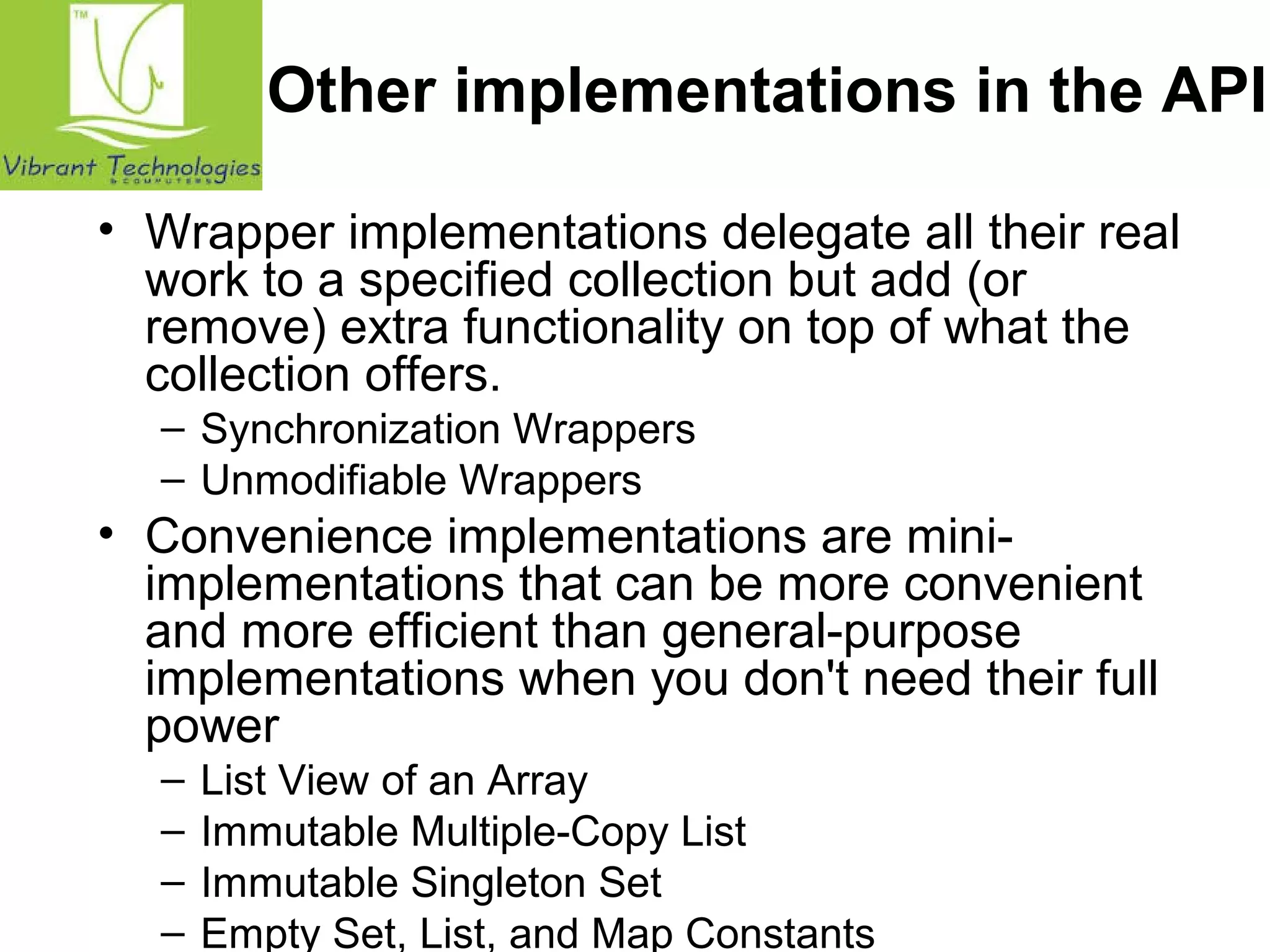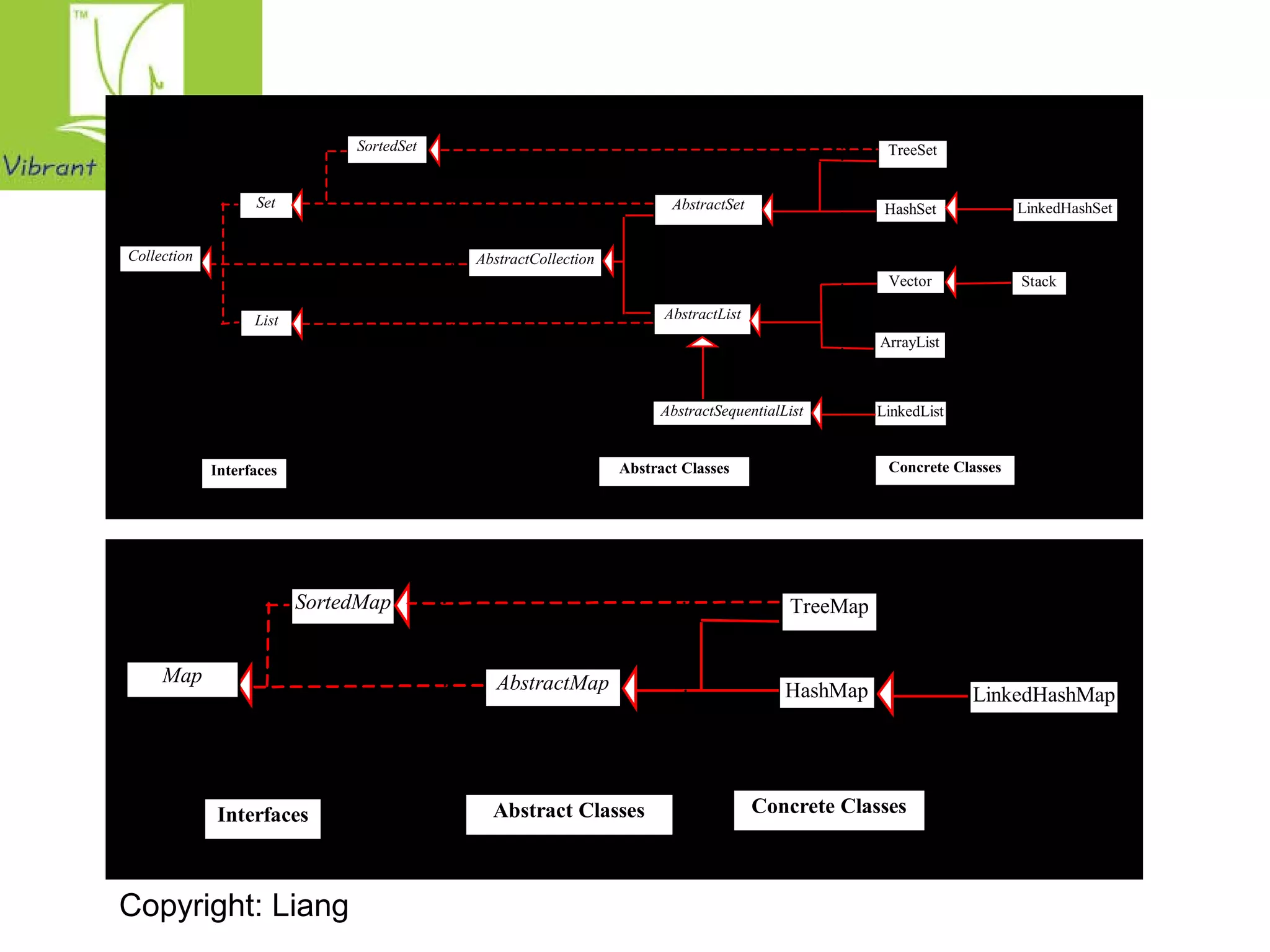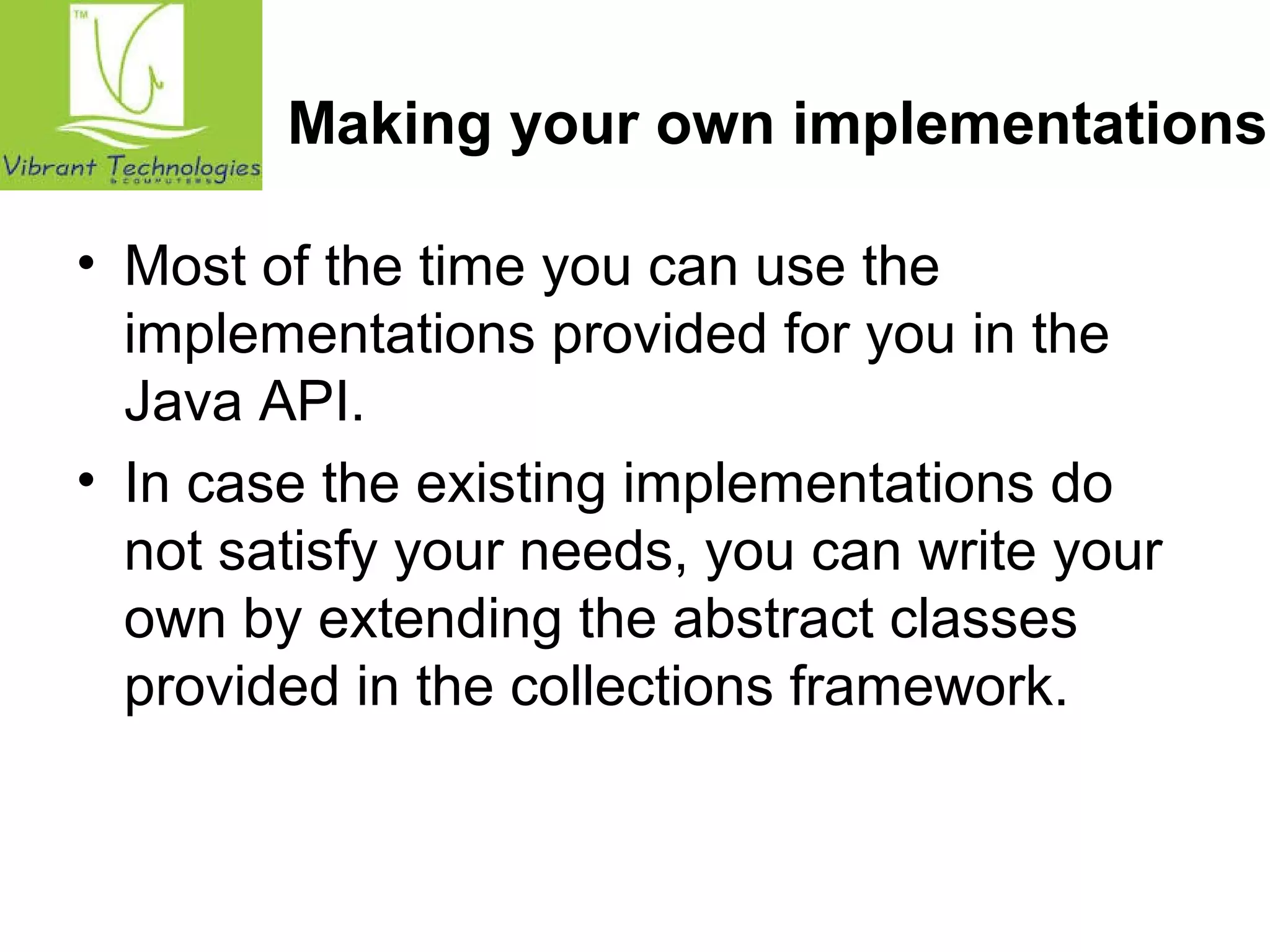The Java Collections Framework provides a unified architecture for representing and manipulating collections, which are groups of objects. It includes various interfaces like Collection, Set, List, Map, Queue, and their implementations, along with algorithms for data manipulation such as sorting and searching. This framework allows developers to choose data structures based on their needs while ensuring flexibility and efficiency.

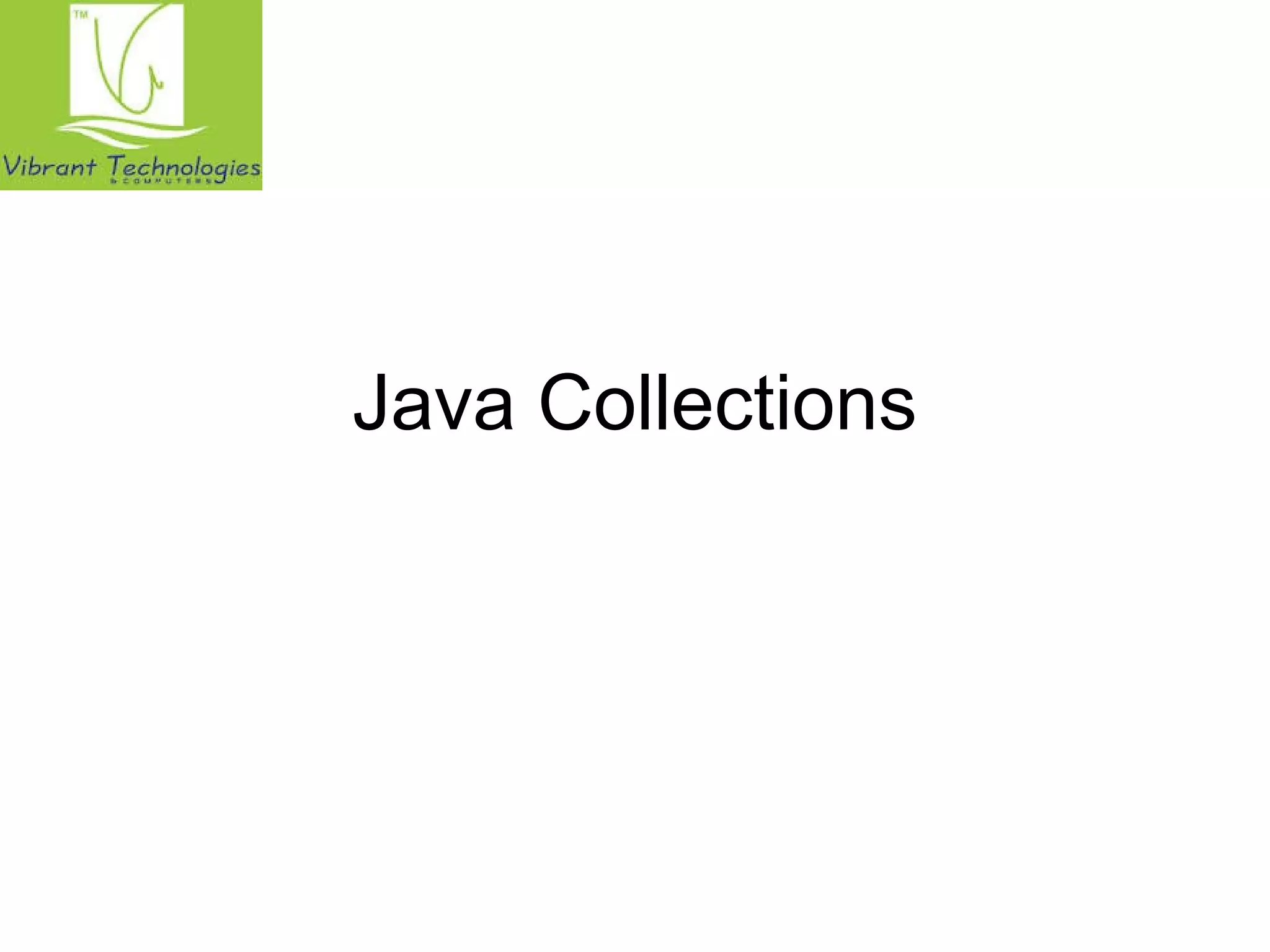
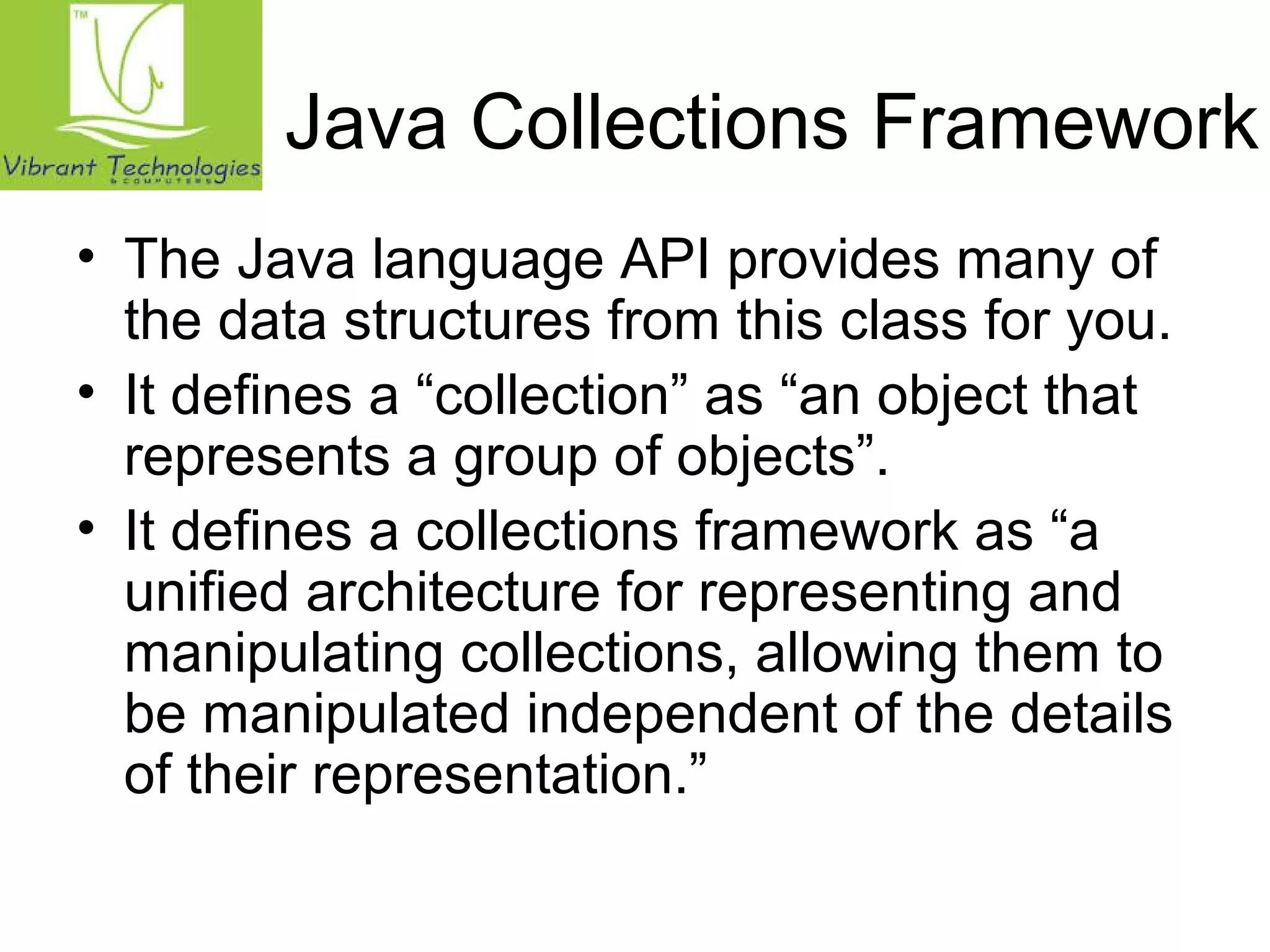
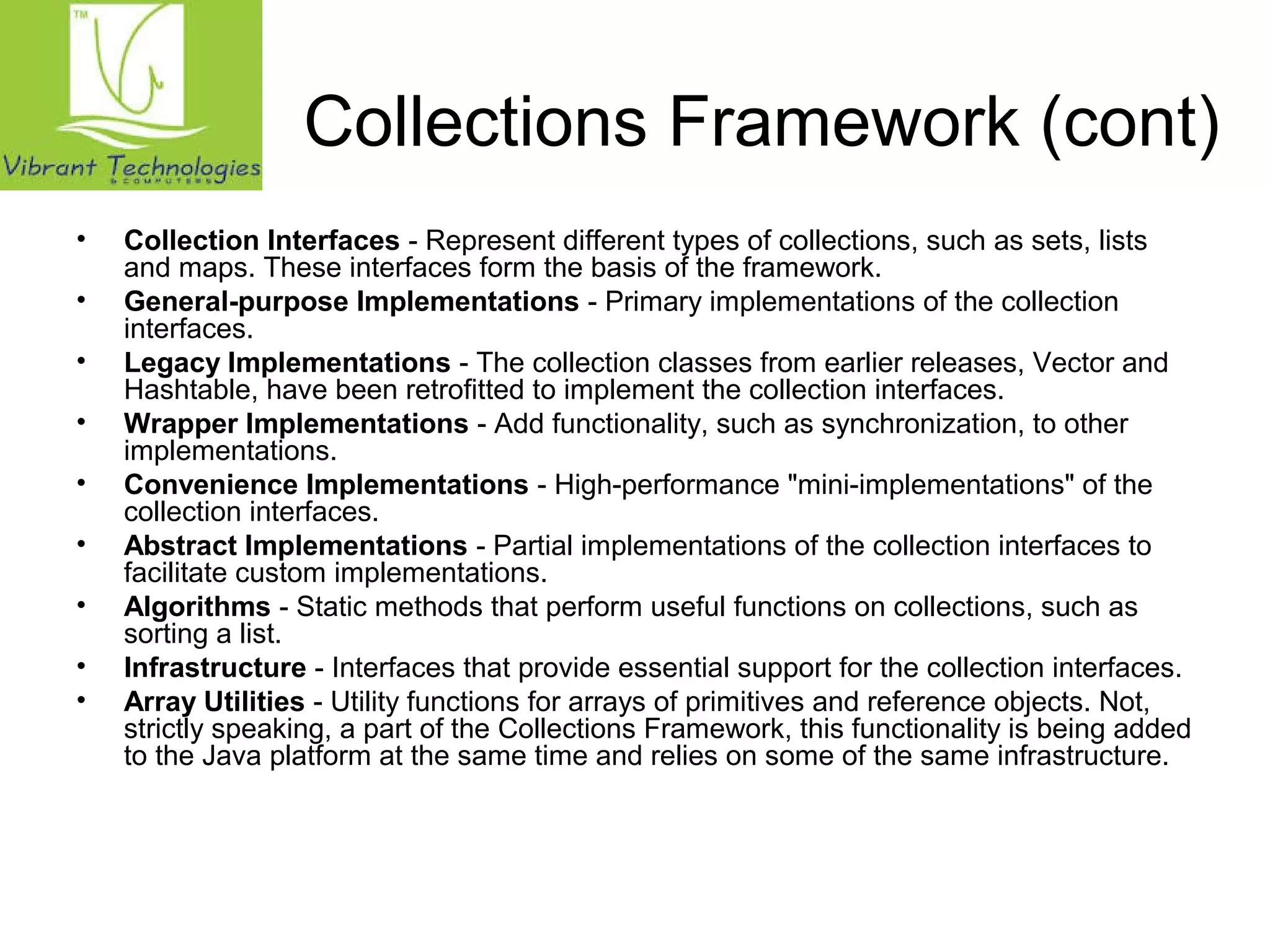
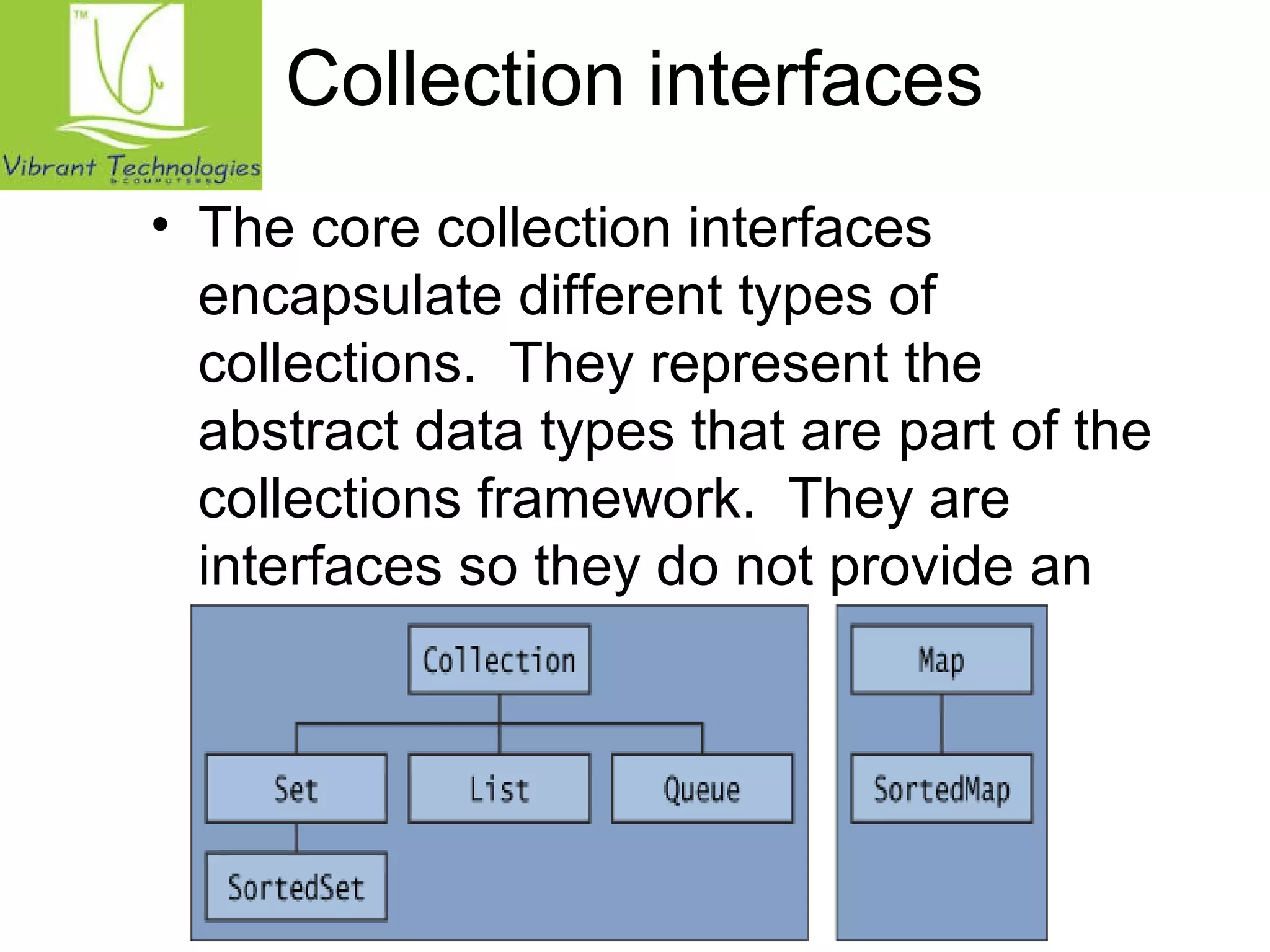
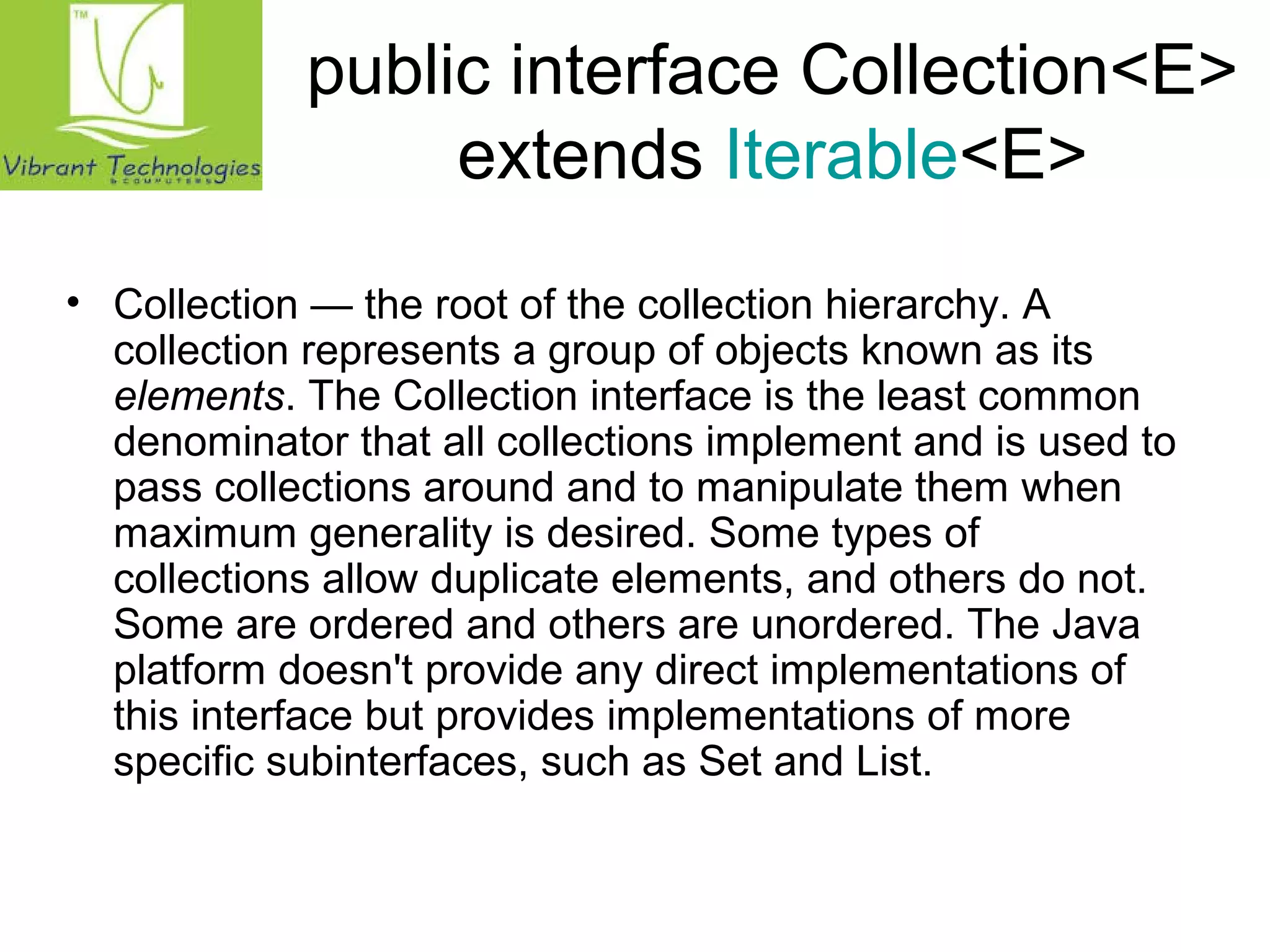
![public interface Collection<E>
extends Iterable<E>
public interface Collection<E> extends Iterable<E> {
// Basic operations
int size();
boolean isEmpty();
boolean contains(Object element);
boolean add(E element); //optional
boolean remove(Object element); //optional
Iterator<E> iterator();
// Bulk operations
boolean containsAll(Collection<?> c);
boolean addAll(Collection<? extends E> c); //optional
boolean removeAll(Collection<?> c); //optional
boolean retainAll(Collection<?> c); //optional
void clear(); //optional
// Array operations
Object[] toArray();
<T> T[] toArray(T[] a);
}](https://image.slidesharecdn.com/bestcoreadvancedjavaclassesinmumbai-141030043900-conversion-gate02/75/Best-core-advanced-java-classes-in-mumbai-7-2048.jpg)
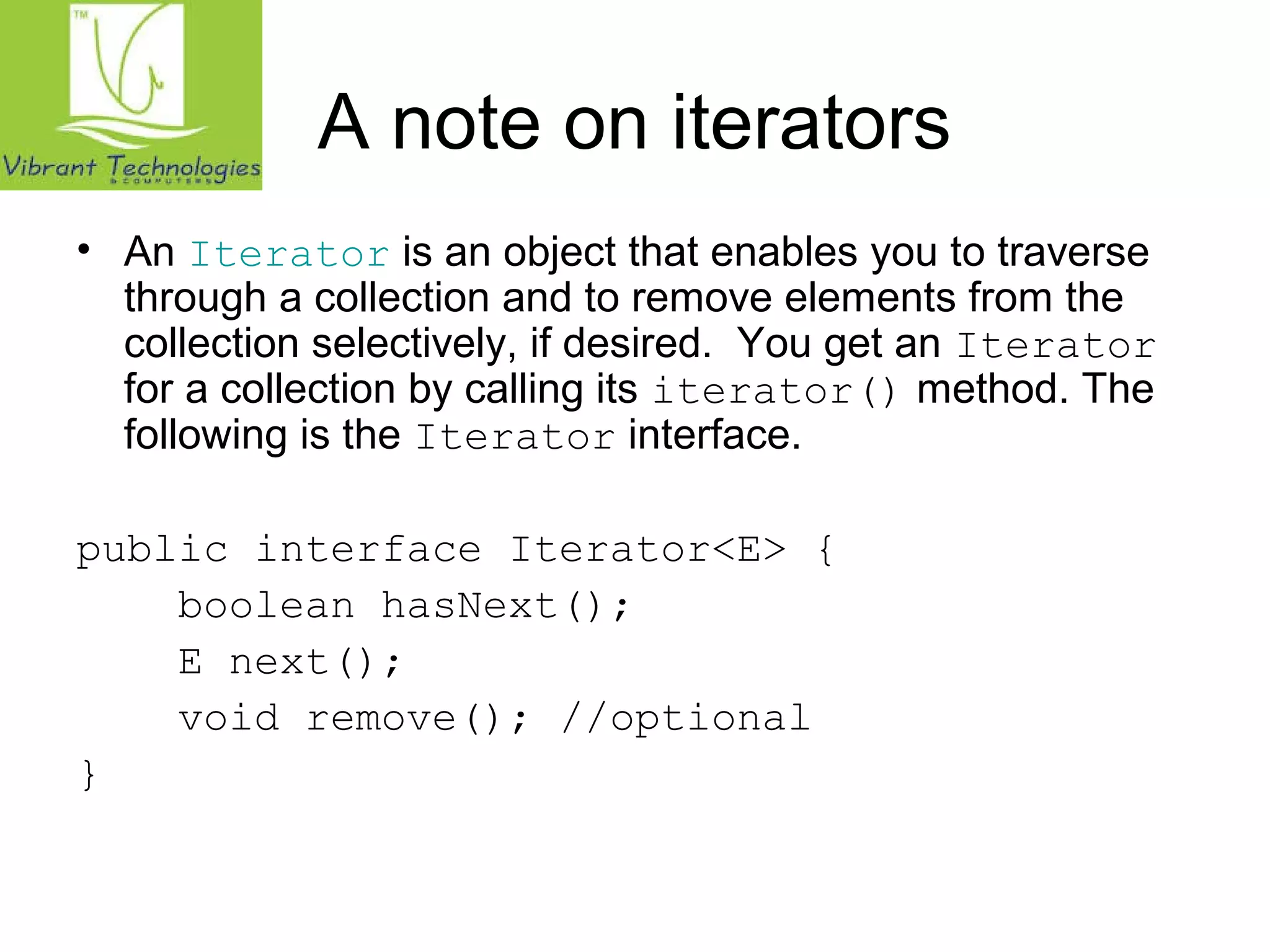
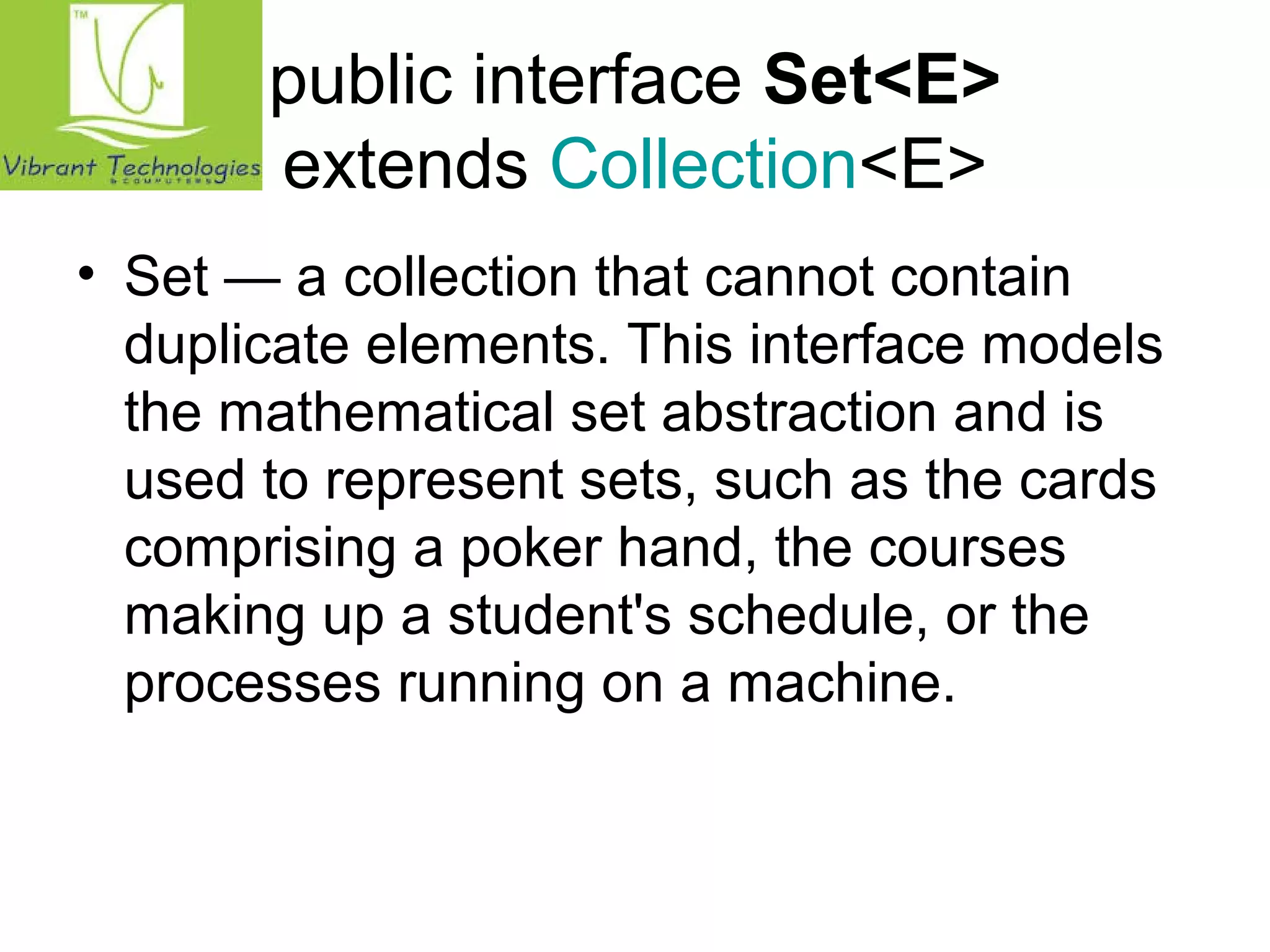
![public interface Set<E>
extends Collection<E>
public interface Set<E> extends Collection<E> {
// Basic operations
int size();
boolean isEmpty();
boolean contains(Object element);
boolean add(E element); //optional
boolean remove(Object element); //optional
Iterator<E> iterator();
// Bulk operations
boolean containsAll(Collection<?> c);
boolean addAll(Collection<? extends E> c); //optional
boolean removeAll(Collection<?> c); //optional
boolean retainAll(Collection<?> c); //optional
void clear(); //optional
// Array Operations
Object[] toArray();
<T> T[] toArray(T[] a);
}
Note: nothing added to Collection interface – except no duplicates allowed](https://image.slidesharecdn.com/bestcoreadvancedjavaclassesinmumbai-141030043900-conversion-gate02/75/Best-core-advanced-java-classes-in-mumbai-10-2048.jpg)
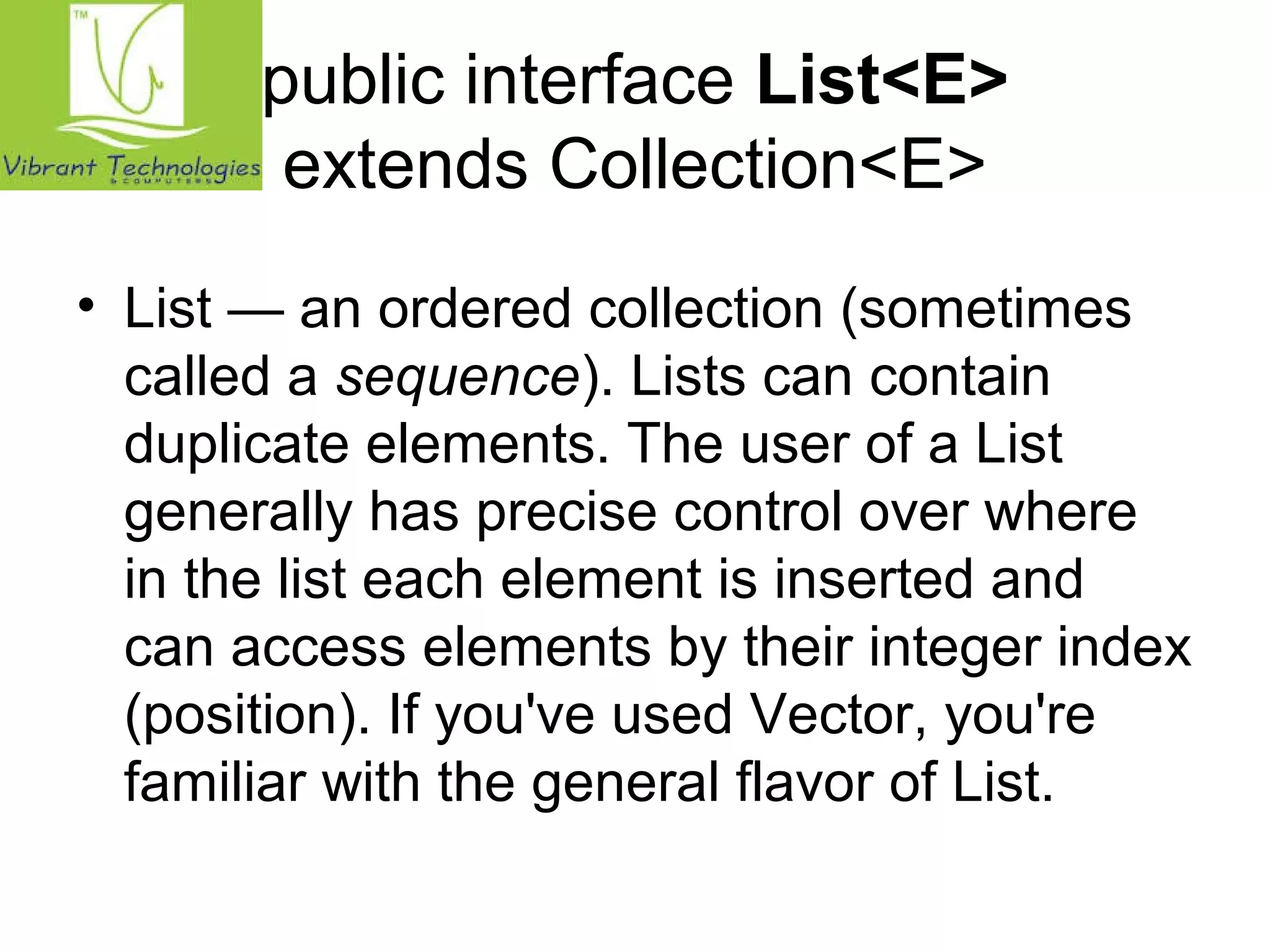
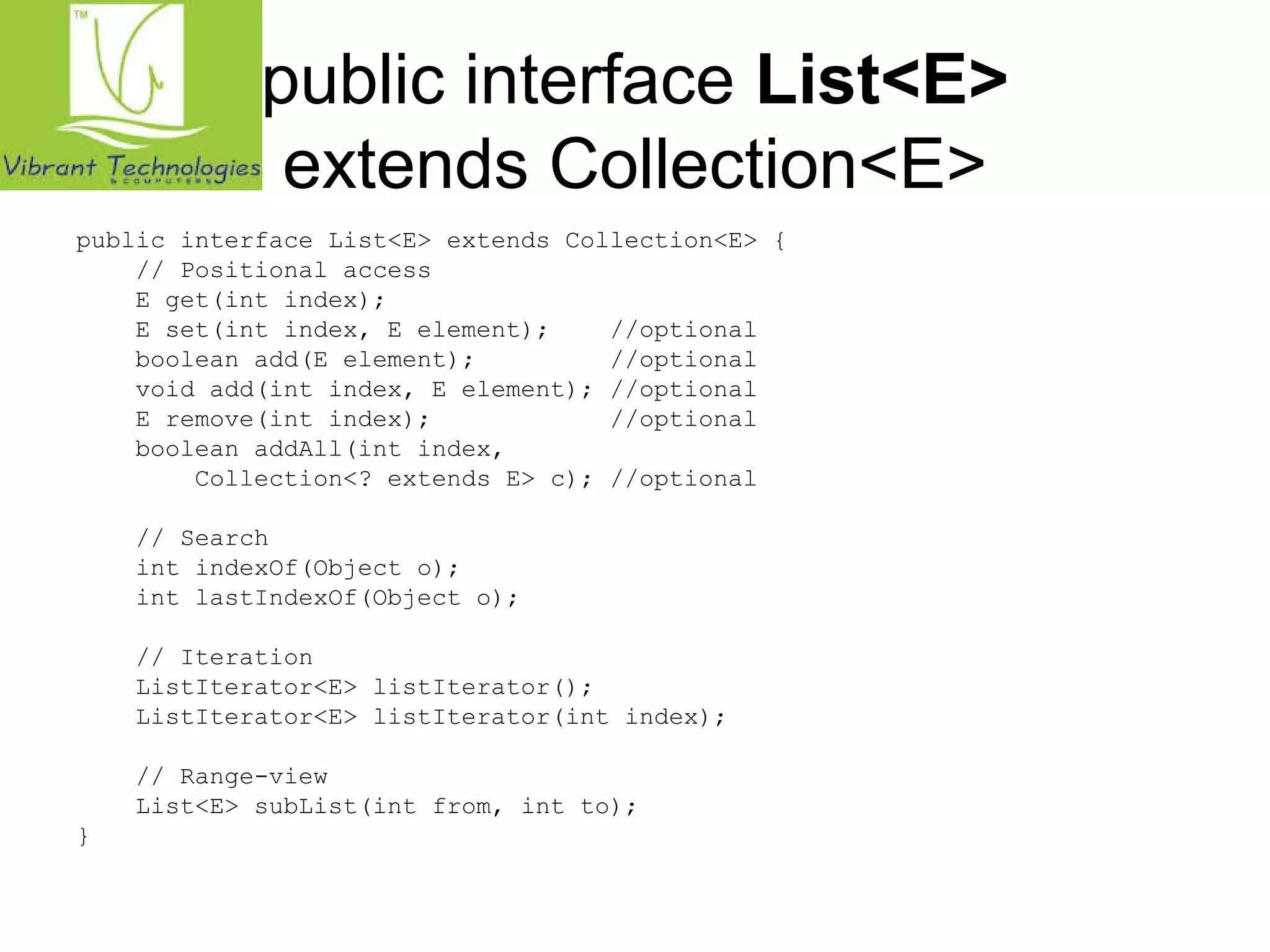
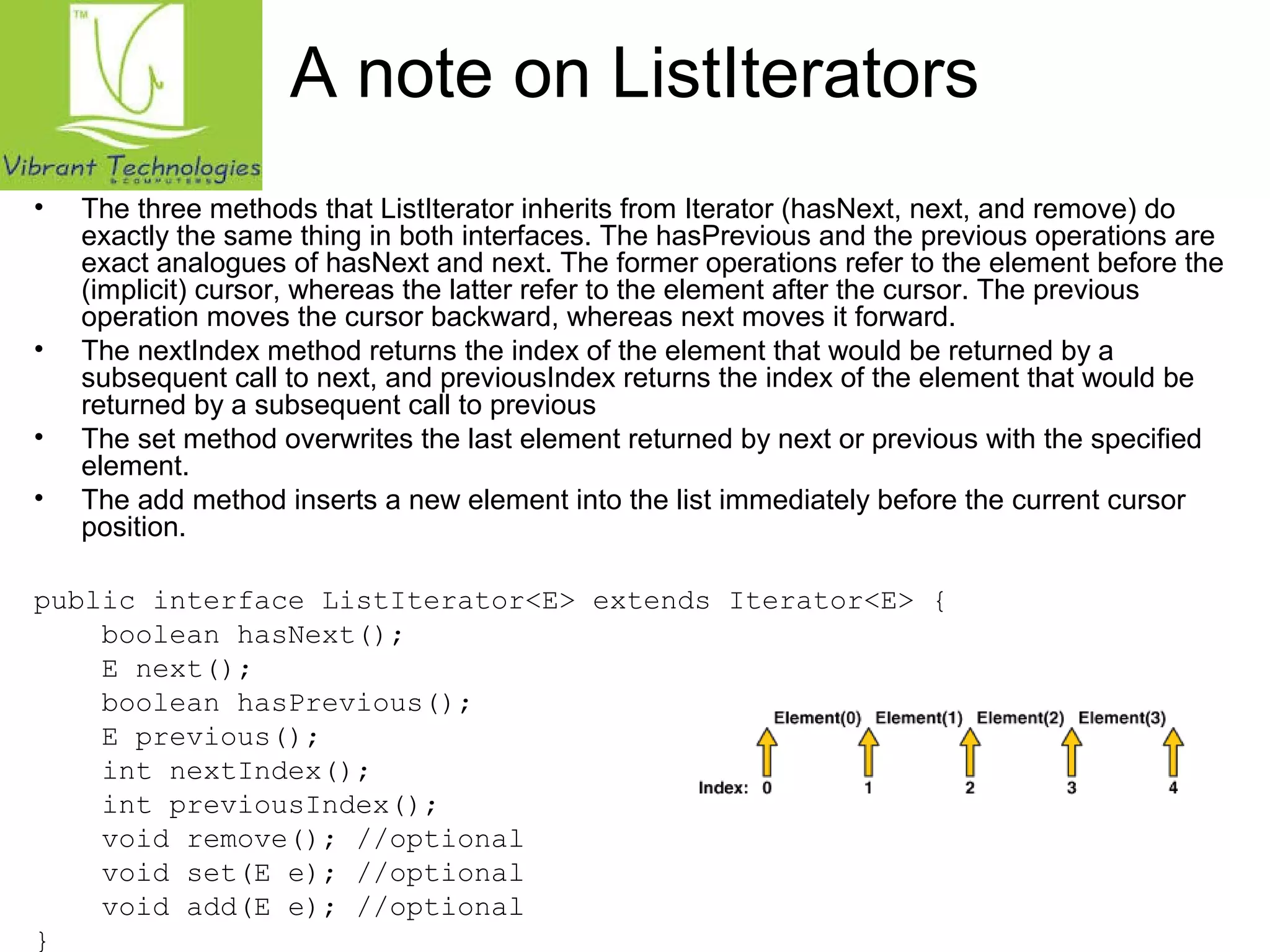
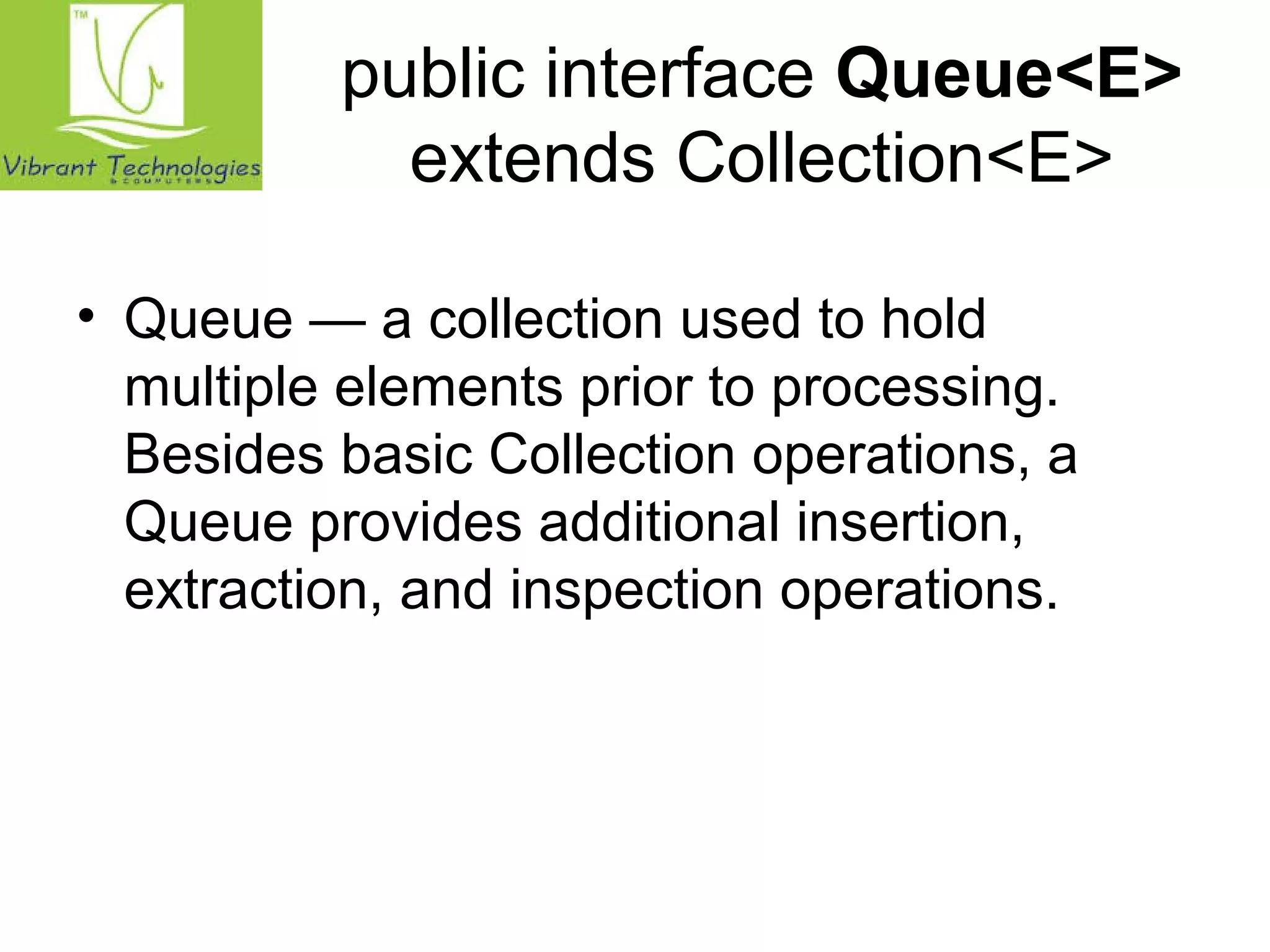
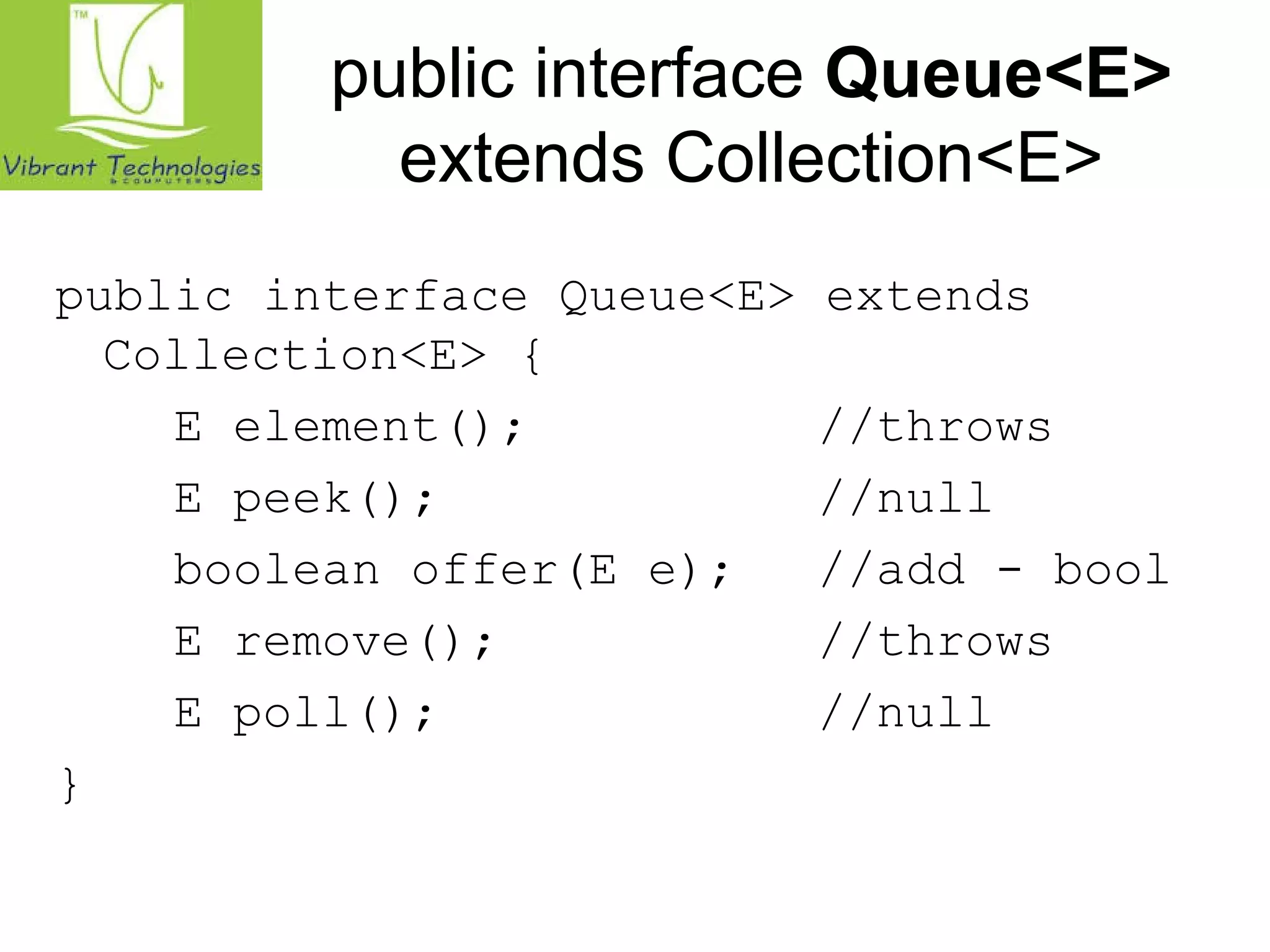
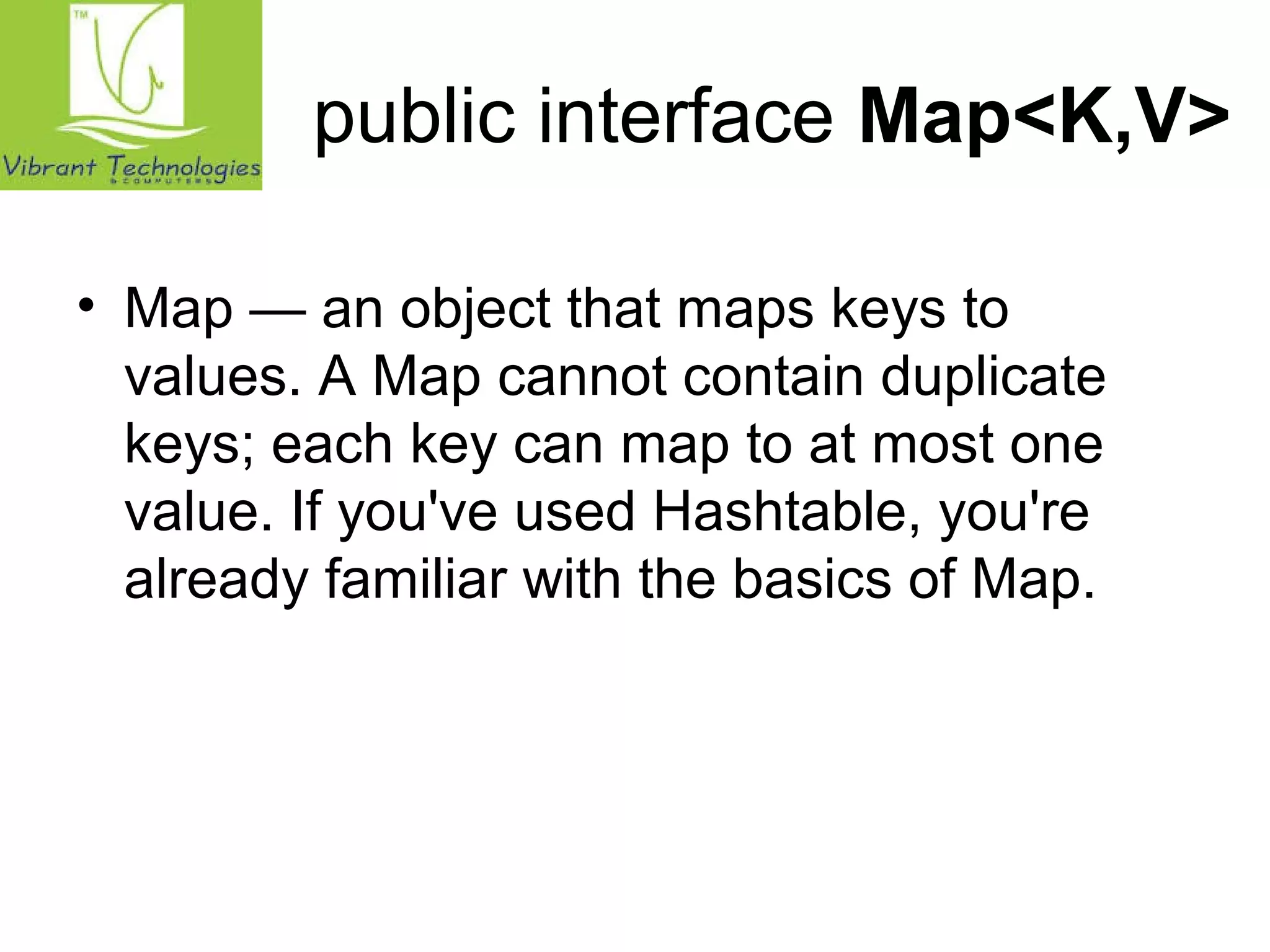
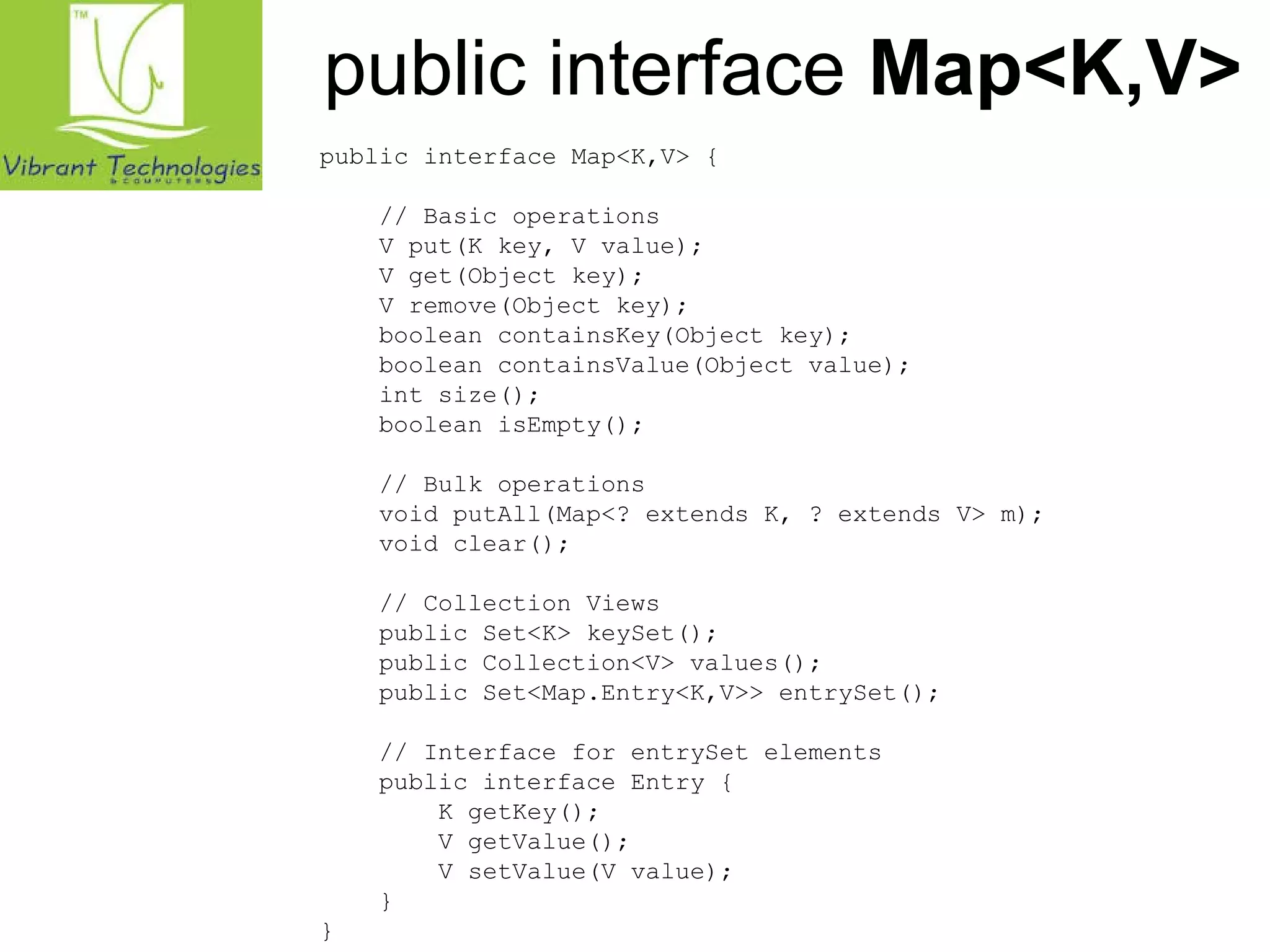
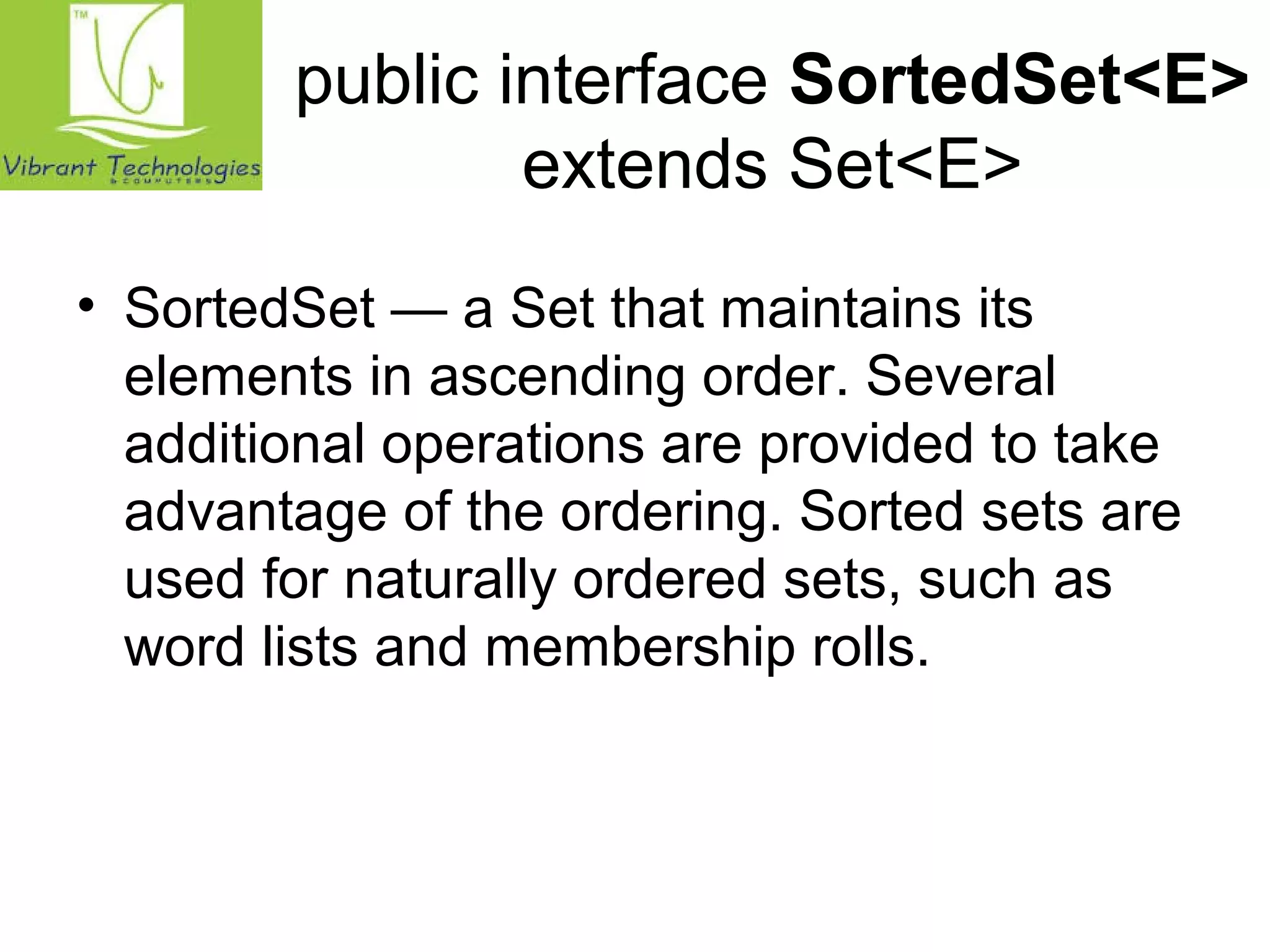
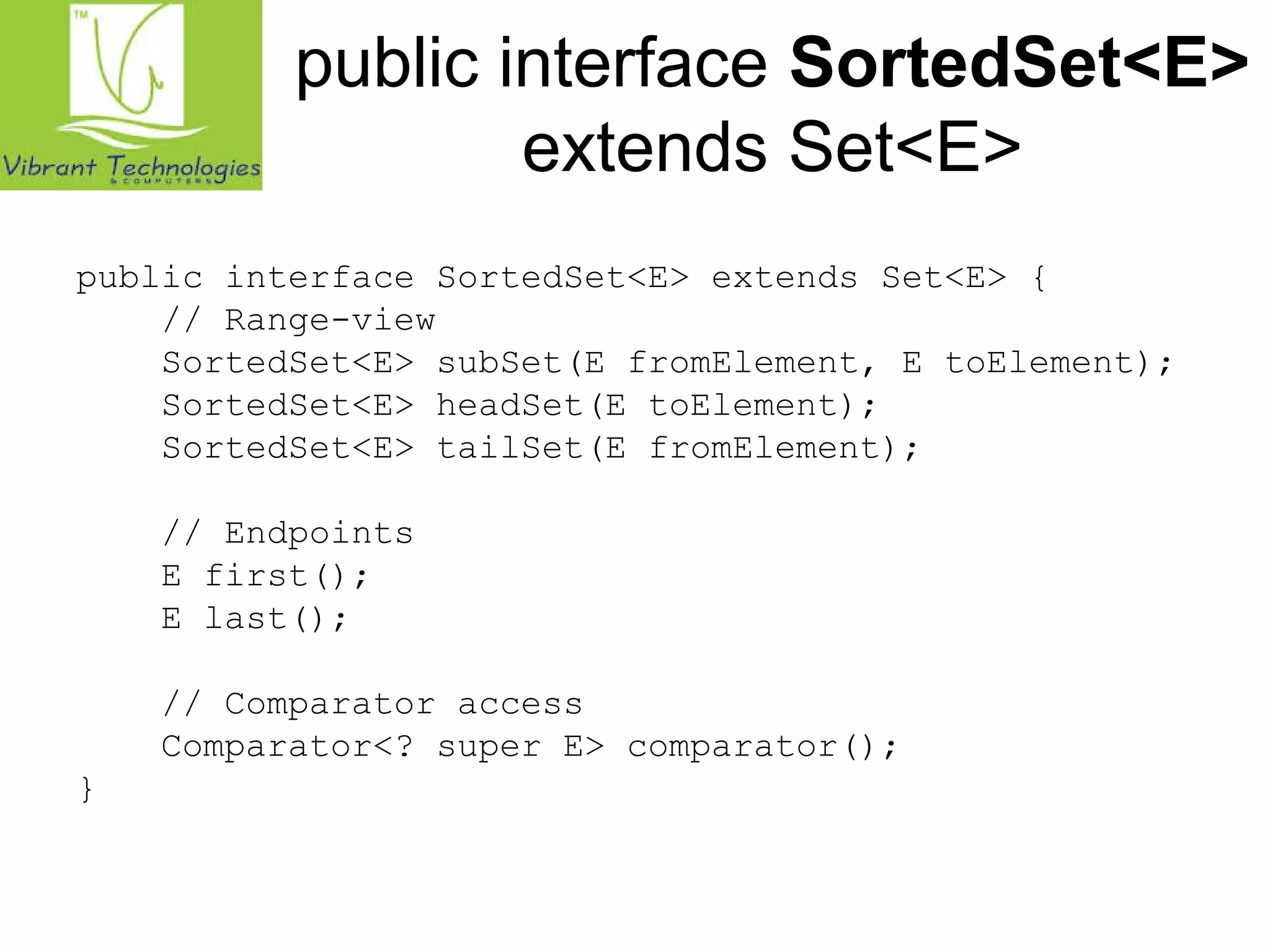
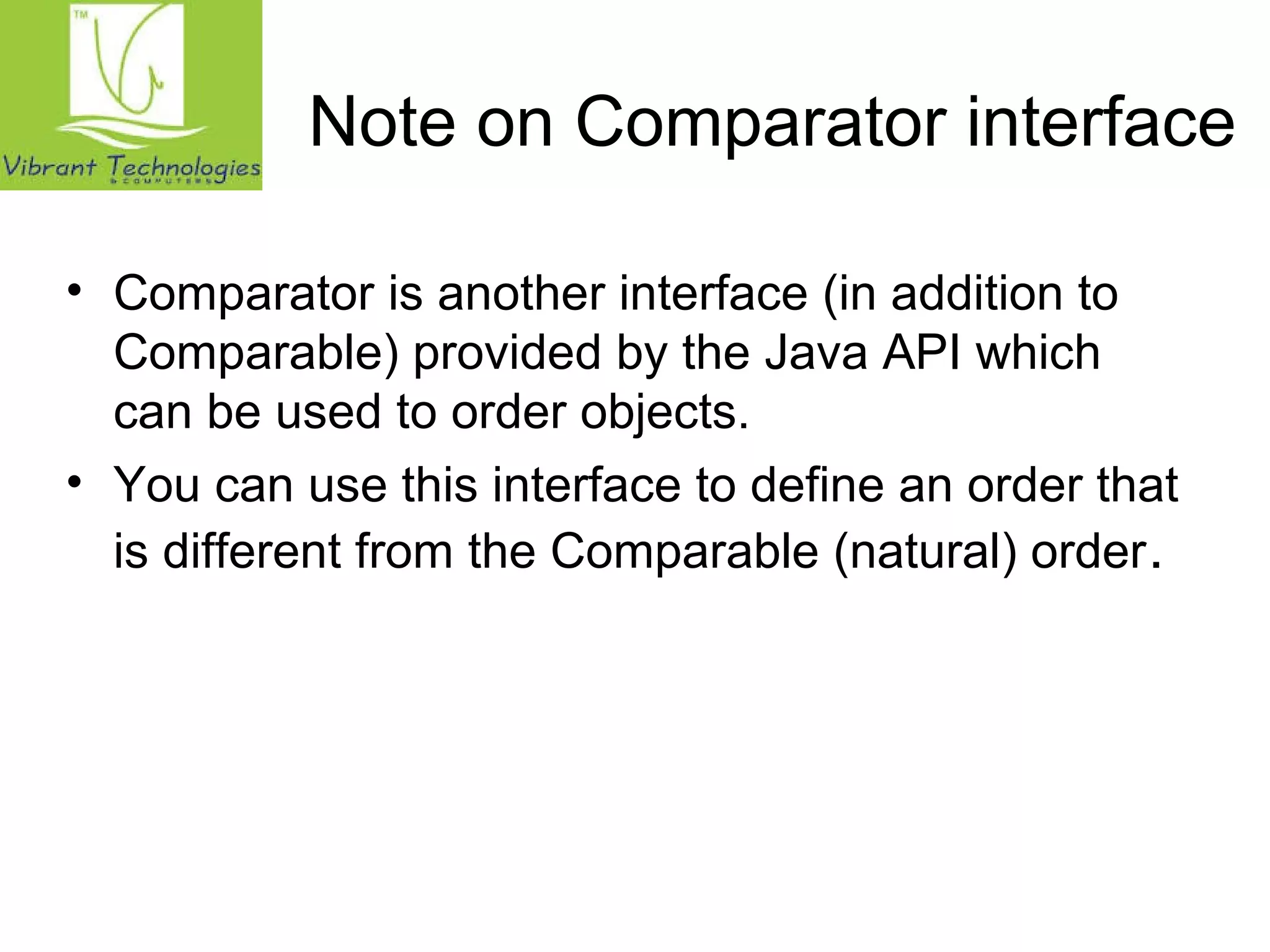
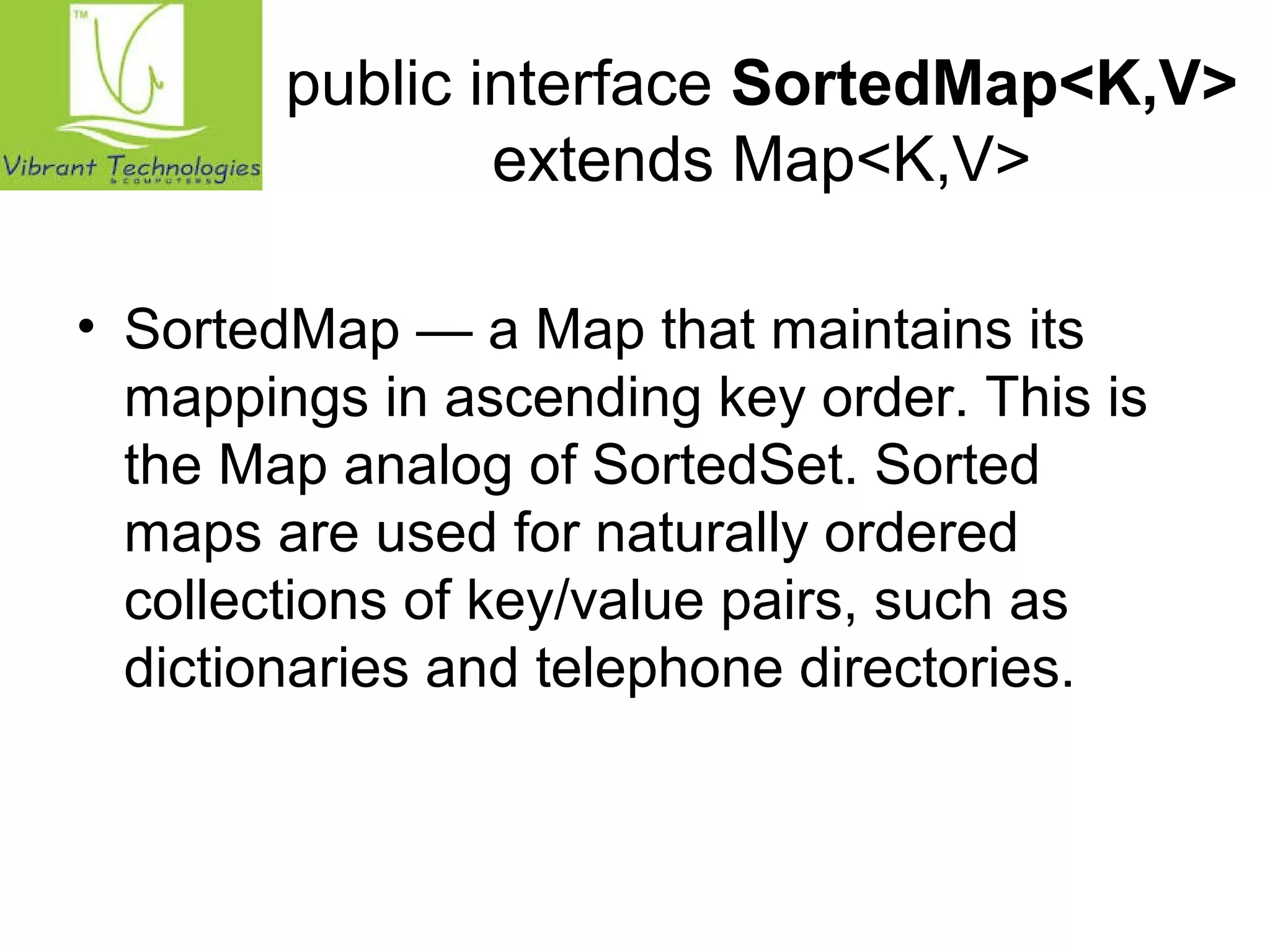
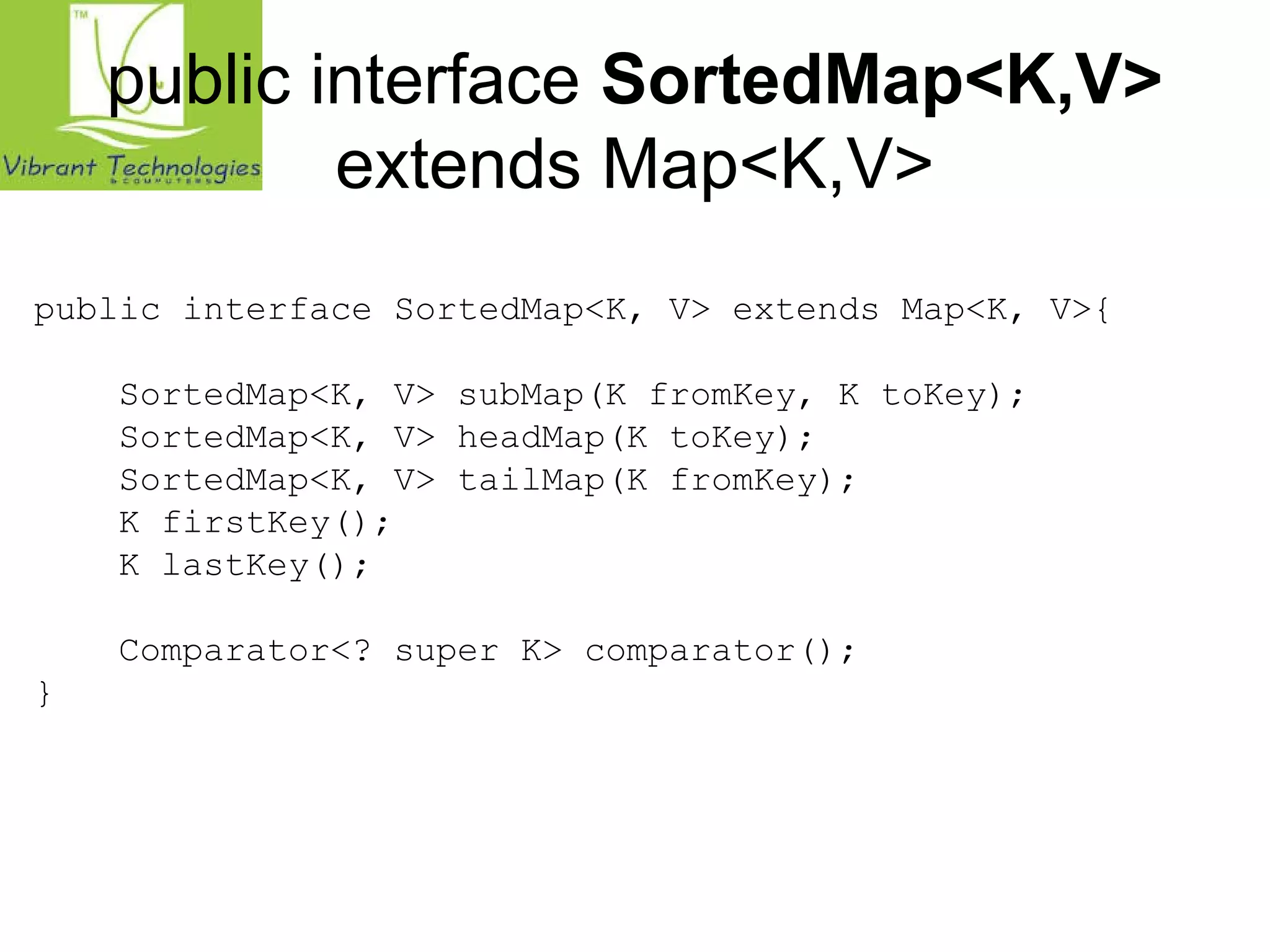
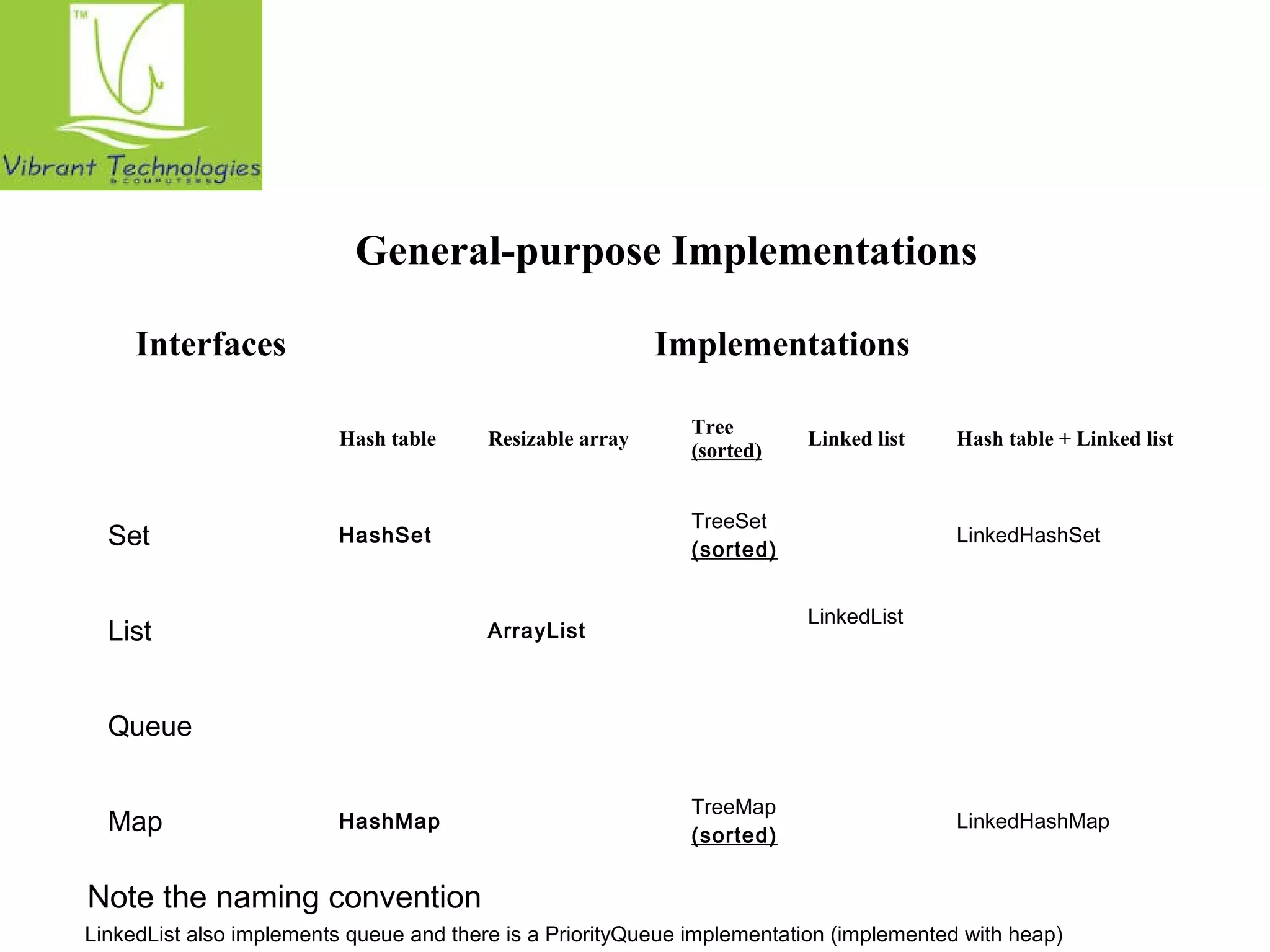
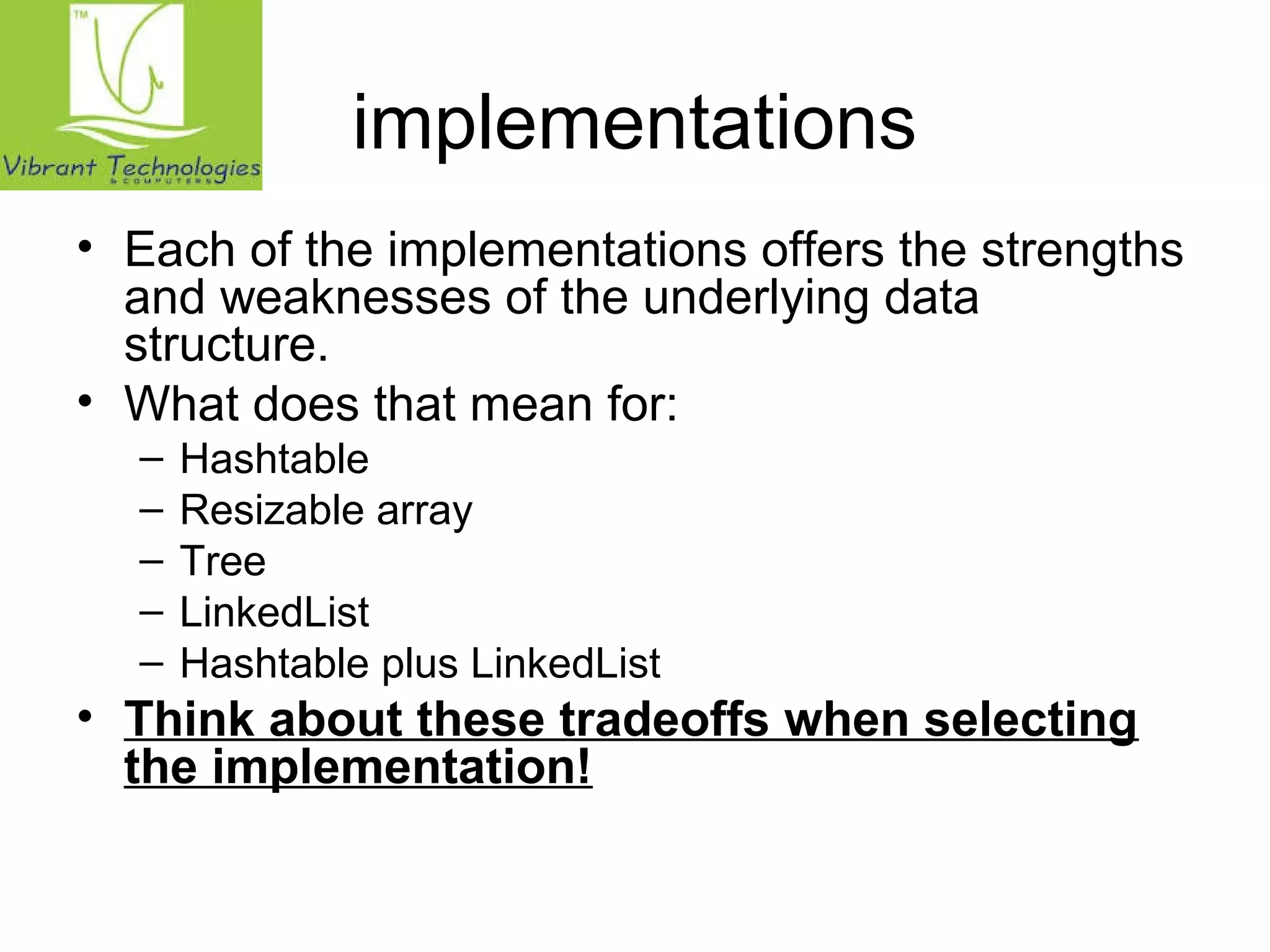
![Choosing the datatype
• When you declare a Set, List or Map, you should use Set, List or Map
interface as the datatype instead of the implementing class. That will allow
you to change the implementation by changing a single line of code!
-----------------------------------------------------------------------------------------
import java.util.*;
public class Test {
public static void main(String[] args) {
Set<String> ss = new LinkedHashSet<String>();
for (int i = 0; i < args.length; i++)
ss.add(args[i]);
Iterator i = ss.iterator();
while (i.hasNext())
System.out.println(i.next());
}
}](https://image.slidesharecdn.com/bestcoreadvancedjavaclassesinmumbai-141030043900-conversion-gate02/75/Best-core-advanced-java-classes-in-mumbai-25-2048.jpg)
![import java.util.*;
public class Test {
public static void main(String[] args)
{
//map to hold student grades
Map<String, Integer> theMap = new HashMap<String, Integer>();
theMap.put("Korth, Evan", 100);
theMap.put("Plant, Robert", 90);
theMap.put("Coyne, Wayne", 92);
theMap.put("Franti, Michael", 98);
theMap.put("Lennon, John", 88);
System.out.println(theMap);
System.out.println("--------------------------------------");
System.out.println(theMap.get("Korth, Evan"));
System.out.println(theMap.get("Franti, Michael"));
}
}](https://image.slidesharecdn.com/bestcoreadvancedjavaclassesinmumbai-141030043900-conversion-gate02/75/Best-core-advanced-java-classes-in-mumbai-26-2048.jpg)
